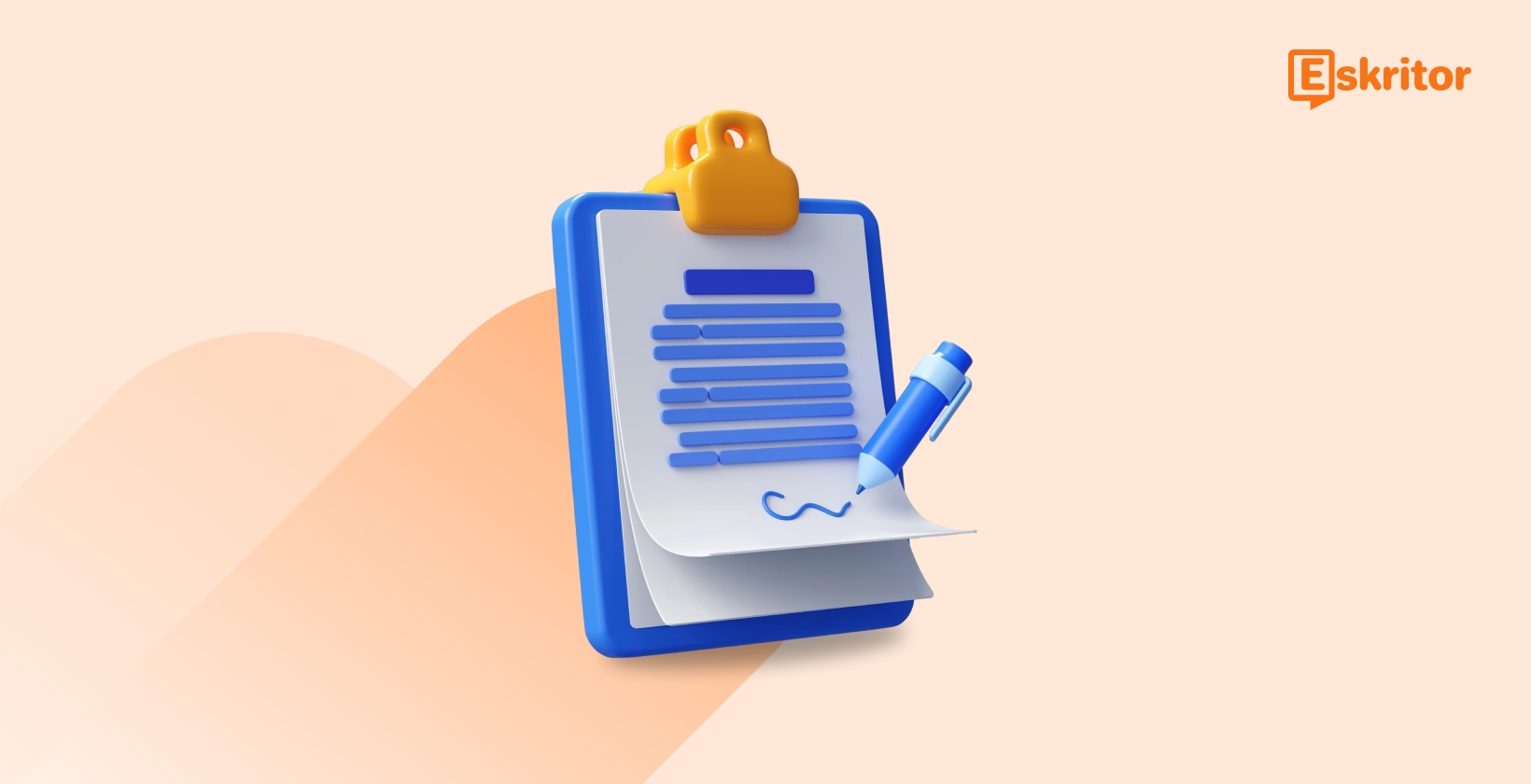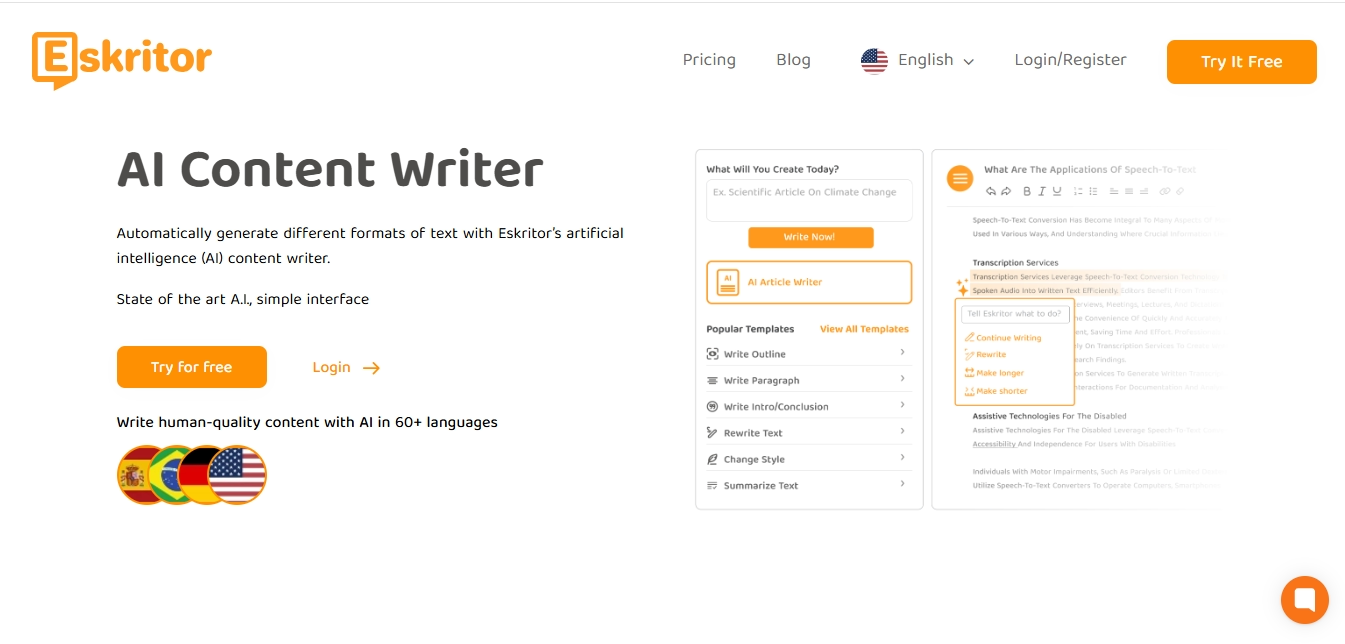
What Is Formal Writing? Tips and Best Practices
Generate the Best Content with AI in Seconds
Generate the Best Content with AI in Seconds
In professional and academic environments, clarity is non-negotiable. Formal writing is the cornerstone of clarity, whether you are drafting a critical business proposal or composing an academic paper. It’s not just about sounding fancy. It’s about eliminating misunderstandings, streamlining workflows, and putting everyone on the same page.
However, professionals and academics are increasingly having trouble with formal writing because of its rare day-to-day modern uses.
This guide will refresh your memory. By the end, you’ll remember every essential aspect of formal writing. We’ll even recommend a tool you can use to convert any kind of writing into formal literature.
Understanding Formal Writing
This section is a concise summary of what formal writing is all about.
Definition of Formal Writing
Formal writing is a style that prioritizes clarity, objectivity, precision, and adherence to established conventions.
It's used in situations where a professional and respectful tone is required and where accuracy and credibility are paramount. It is about conveying information or arguments in a clear, concise, and structured manner, free from personal bias.
A good guide for formal writing is “ ”
Formal vs Informal Writing Comparison
The table below shows situations comparing formal writing vs informal writing.
Now, you can imagine how formal writing looks. Here’s how you know when you use it.
When to Use Formal Writing

Formal writing is essential in various professional and academic scenarios, including:
- Business Communications: Reports, proposals, official emails, business letters, and contracts.
- Academic Papers: Essays, research papers, theses, dissertations, and journal articles.
- Legal Documents: Contracts, legal briefs, and official statements.
- Public Speaking and Presentations: Prepared speeches and presentations in professional settings.
- Job Applications: Cover letters and resumes.
- External Communications: Press releases, public announcements, and official website content.
Using formal writing in these contexts ensures your message is taken seriously, enhances your professional image, and minimizes misinterpretations.
Essential Elements of Formal Writing
Good formal writing has all three of these qualities:
Professional Writing Techniques
To excel in formal writing, be straightforward and actively eliminate unnecessary jargon and complexity that might obscure your message. Every sentence must be purposeful, contributing directly to your central argument or informational goal. Select words with exactness to eliminate ambiguity and define key terms to ensure your reader's complete understanding from the outset.
Formal Language Guidelines
Choose your words carefully and use a wide vocabulary to find words that accurately fit what you’re writing about. Another set of rules for formal language in writing is about how you say things. Write from a third-person point of view – talk about "he," "she," "it," or "they" instead of "I" or "you."
This makes your writing sound more objective and less personal. And for the most part, use active voice to make your writing more direct. Finally, don't use slang, everyday sayings, or expressions that might only make sense to some people.
Structure and Organization
A well-organized document makes a huge difference. It helps people understand your message easily because the flow and formal writing structure are easy to follow. Start with a clear introduction that tells people what your document is about and what you plan to do or say.
Then, organize your writing into paragraphs, with each paragraph talking about just one main idea. Use a topic sentence at the start of each to show what that idea is. Use headings and subheadings to break up your text.
Make sure to use transition words like "also," "but," or "for example" to smoothly connect your paragraphs and ideas. Finally, end with a strong conclusion that sums up your main points and reminds people of your main message.
Business Writing Format Guide
This section will guide you through essential business document formats, formatting rules, and common mistakes to avoid.
Document Types and Standards

In the business world, formal writing takes various forms, each with its own standards:
- Business Letters: Your professional voice to the outside world. They’re polished, respectful, and follow strict formality conventions.
- Business Reports: Writing focuses on pure objectivity and factual representation, like a Wikipedia article. The style is clear and direct.
- Proposals: Objective, just like reports, but with a forward-looking, action-oriented writing style. Proposals incorporate a lot of “we” and have a persuasive undertone.
- Memos: Straightforward and accessible language, avoiding jargon. It’s like speaking to a colleague, but you’re on a stage, and everyone can hear your voice.
- Emails: Most versatile and mainly mirror the relationship with the person you’re sending the email to. If it’s a colleague, it can be more simple and clear. But if it’s to a higher-up, then formal, professional writing is key.
By understanding these distinctions, you can communicate with precision and impact across the diverse landscape of professional interactions.
Professional Formatting Rules
Your formatting alone can instantly elevate your writing. Here are some key formal writing rules that are essential for creating polished and effective formal documents:
- Professional Font: Arial or Times New Roman in 12pt.
- Margins & Spacing: Standard 1-inch margins and 1.5 or double spacing to prevent text overload.
- Paragraphing: Indent and generous space lines to guide readers through your ideas.
- Lists: Numbered lists for sequences and bullet points for items.
- Style Consistency: Uniform fonts, headings, and styles throughout your document.
The higher your position is in your company, the more choice you have in stylizing your formatting and choosing professional fonts .
Common Mistakes to Avoid in Format Writing
Several common mistakes can undermine the formality of business writing:
- Overuse of Jargon: While industry-specific terms are sometimes necessary, excessive jargon can confuse readers.
- Vague Language: Avoid vague or ambiguous language. Be specific and direct in your statements.
- Grammatical Errors and Typos: Proofread meticulously. Grammatical errors and typos detract from your credibility.
- Emotional or Biased Language: Keep your tone neutral and objective. Avoid emotional outbursts or biased phrasing.
- Informal Salutations and Closings: Use formal salutations (e.g., "Dear Mr./Ms./Dr. [Last Name]") and closings (e.g., "Sincerely," "Respectfully").
Avoid these mis,steps and your formal writing will consistently project authority and polish.
Academic Writing Guidelines
Academics write to illuminate and explore the world. This writing style is fundamentally different from business, and here’s why:
Research Paper Standards

Academic writing demands rigor and precision. Research papers are prime formal writing examples:
- Thesis-Driven: Formal writing is what makes a thesis clearly defined and understandable even to readers who are years in the future. Everything here is about being objective.
- Analytical and Critical: Go beyond description to analyze and critically evaluate information. Demonstrate original thought and insight.
- Structured Argumentation: Present arguments in a logical, step-by-step manner. Use evidence to build your case and address counterarguments.
- Formal Tone and Style: Maintain a highly formal, objective, and impersonal tone. Avoid personal opinions and subjective language.
If you follow these rules, your main idea will be clear even if people read it years later.
Citation and Reference Rules
Proper citation is crucial in academic writing guidelines. They give credit to sources and avoid plagiarism:
- Consistent Citation Style: Choose a recognized citation style (e.g., MLA, APA, Chicago) and adhere to it consistently throughout your paper.
- In-Text Citations: Use in-text citations to reference sources within the body of your paper.
- Reference List/Bibliography: Include a comprehensive list of all sources cited at the end of your paper.
- Accuracy and Completeness: Ensure all citation information is accurate and complete, following the guidelines of your chosen style.
- Plagiarism Avoidance: Understand what constitutes plagiarism and take steps to avoid it. Always cite sources for direct quotes, paraphrased ideas, and data.
Citation and referencing are the ethical backbones of academic writing.
Academic Tone and Style
Your focus should be squarely on the research and the evidence itself, not on injecting personal feelings or subjective opinions into the discourse. To maintain this objective stance, consistently employ the third-person perspective, which helps create a necessary distance and reinforces the impersonal nature of scholarly inquiry.
Furthermore, the language you choose must be precise and formal. This means utilizing terminology specific to your academic discipline while rigorously avoiding colloquialisms, slang, and contractions that undermine the seriousness and timelessness of academic work.
Now you’re familiar with these formal writing style guides and professional writing techniques, here’s how you can use AI to write formally for you.
Top Tools for Formal Writing
AI-writing tools can significantly enhance your formal writing. These tools offer features like grammar and spell check, style suggestions, and plagiarism detection.
Eskritor
Eskritor is a cutting-edge AI writing assistant used in academia and corporate industries to write and refine content pieces.

This intelligent tool works by processing your topic, keywords, or specific writing prompt and leveraging its AI engine to craft original drafts. For this case, the AI tool can apply industry-standard formal writing to your documents, or it can learn how to replicate the writing style of your company’s formal documents.
Unique Features of Eskritor for Formal Writing:
- Tone Adjustment: Apply consistent, accurate, and professional formal writing throughout your document.
- Style Enhancement: Advanced style suggestions to refine your sentences for clarity and precision.
- Structure Assistance: Aids in organizing your thoughts logically, helping you create well-structured documents with clear introductions, coherent paragraphs, and strong conclusions.
- Vocabulary Enrichment: Eskritor suggests more formal synonyms and vocabulary choices to help you move away from casual language and adopt a more scholarly or business-appropriate lexicon.
- Multi-Language Capabilities: Support for over 40 languages, meaning you can maintain formal writing standards even when communicating across linguistic boundaries.
Here’s a feature comparison between Eskritor and other market alternatives so you can see the difference:
If you really want to be great at formal writing, Eskritor is the best choice. It helps you get the right tone, structure your writing, and even write whole documents for you. Other tools are okay, but Eskritor is made just for formal writing.
Give Eskritor a try now and see how much better your formal writing can be!
Conclusion
Formal writing is crucial for academics and businesses because it makes everything clear. It helps people trust you, puts everyone on the same page, and drives action in your career. This guide showed you the important parts of how to write formally. Use clear and specific words, organize your writing, understand the conventions of the document you’re writing, and more.
Eskritor is made to make formal writing easier and better. Don't let formal writing be hard anymore. Start using Eskritor today and see how much better and clearer your writing becomes for your job and school.
Frequently Asked Questions
An example of formal style writing is a business report, which objectively presents findings and recommendations in a structured and professional manner, avoiding personal opinions and casual language.
The formal writing method is best summarized as writing for an audience you don't know personally, ensuring your tone is respectful, objective, and universally understood.
A key rule of formal writing, particularly in academic contexts, is to avoid using first or second-person pronouns, maintaining objectivity by using third-person perspectives instead.
Common elements not allowed in formal writing include contractions, slang, jargon (when excessive), vague language, emotional or biased language, and informal salutations and closings, all of which can undermine professionalism and clarity.





 Dubai, UAE
Dubai, UAE